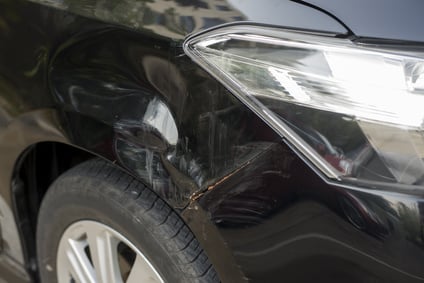Vehicle Damage
A walkthrough of the features available to supervisors for the purpose of tracking any new vehicle damage, and assigning blame.
AngelTrack maintains a damage log for every vehicle in your fleet. Crews can check the damage log of their assigned vehicle, and submit reports (with photo) of new damage. These reports appear in a supervisory queue for review and further action.

Separate Log for Every Vehicle
Each vehicle has its own damage log, viewable under the "Damage" tab of its Vehicle Edit page. From that tab, you can view pictures, edit entries, add new entries, and mark off (deactivate) items that were repaired.
Supervisory access is required by the Vehicle Edit page. Therefore, non-supervisor crew members do not have the authority to edit or to deactivate items in the log. They must use the Damage Card (shown below) which can only view and add damage records. If a crew member accidentally submits a duplicate record, a supervisor must delete it.
Damage Cards
The Vehicle Damage Card is the interface for crew members.
With it, they can review descriptions and photos of current damage, and submit new damage reports. They cannot edit or deactivate entries already in the log.
On the crew member home page is a link to the Vehicle Damage Card. When opened, the card shows the crew member's currently assigned vehicle... but the crew member can view the card of any vehicle assigned to the same station. In this manner, crew members can report damage to every vehicle in the parking lot, not just to their own.
Supervisor Acknowledgement of New Damage
All new reports of vehicle damage -- be they submitted from a Vehicle Damage Card or from a Vehicle Edit page -- appear in the report for supervisors, named Vehicles With New Damage. Your agency will need to determine policies for handling new damage to vehicles.
Items remain in the report until a supervisor clicks the "Acknowledge" button to indicate that the matter has been dealt with. Supervisors can also edit and delete items right from the report, if -- for example -- one of the submitted items is a duplicate, or is missing some information.
Automatic creation of ticket records
If you wish to turn a vehicle damage report into a ticket record suitable for a disciplinary writeup, click the "Create ticket…" link in the grid. AngelTrack will fill in most of the ticket record, and include the damage photograph (if any) as an attachment.
Blame
If blame is known, it can be recorded in the damage record, as well as an indicator of whether the blame is certain or merely suspected. When an employee is blamed for vehicle damage, the damage record shows up under the "Vehicle Damage" tab of the employee's Employee File page.
Best practice is to survey each vehicle thoroughly prior to engaging AngelTrack's damage-tracking system.
Repairs
When damage is repaired, AngelTrack's damage log must be updated to reflect this. Visit the Vehicle Edit page of the vehicle in question, select the "Damage" tab, find the record of the damage that was repaired, and click the associated "Status" button. The record's status changes from "Active" to "Inactive"... and the record will no longer appear in damage reports and cards.
All damage cards and reports in AngelTrack have the option to show inactive (repaired) damage records, in case you wish to review old damages later.